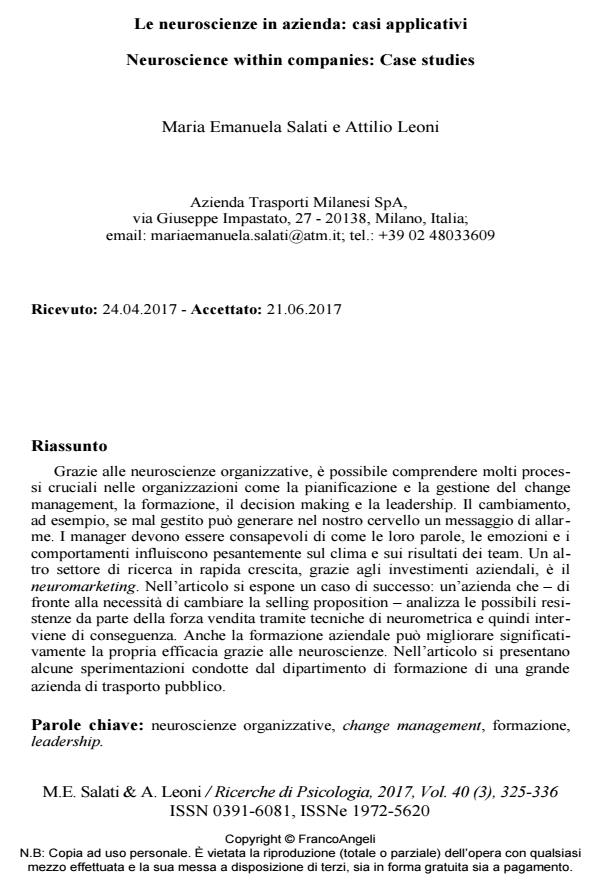Neuroscience within companies: Case studies
Journal title RICERCHE DI PSICOLOGIA
Author/s Maria Emanuela Salati, Attilio Leoni
Publishing Year 2017 Issue 2017/3
Language Italian Pages 12 P. 325-336 File size 291 KB
DOI 10.3280/RIP2017-003004
DOI is like a bar code for intellectual property: to have more infomation
click here
Below, you can see the article first page
If you want to buy this article in PDF format, you can do it, following the instructions to buy download credits

FrancoAngeli is member of Publishers International Linking Association, Inc (PILA), a not-for-profit association which run the CrossRef service enabling links to and from online scholarly content.
It is possible to understand many crucial processes within organizations such as change planning and management, training, decision making and leadership thanks to organisational neuroscience. For example, poorly managed change can result in alarm messages within in our brains. Managers must be aware of how their words, emotions and conduct have a significant impact on team mood and results. Another fastgrowing area of research is neuromarketing thanks to company investments. This article discusses a success story: a company that, faced with the need to change its selling proposition, uses neurometric techniques to analyse the sales force’s possible resistance and then acts accordingly. Training can even significantly improve company efficiency thanks to neuroscience. This article discusses some experiments carried out by the training Department of a large public transport company.
Keywords: Organizational neuroscience, change management, training, leadership.
Maria Emanuela Salati, Attilio Leoni, Le neuroscienze in azienda: casi applicativi in "RICERCHE DI PSICOLOGIA " 3/2017, pp 325-336, DOI: 10.3280/RIP2017-003004